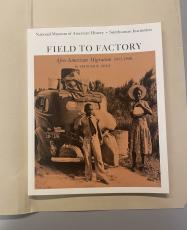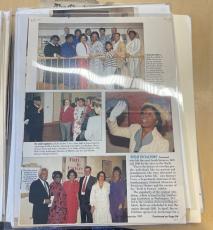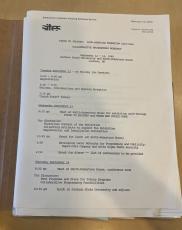Current headlines about war and the impact of forced migration on women are stark reminders of historic migrations and how women adapted and took on new roles.
In 1987, Field to Factory: Afro-American Migration 1915-1940 premiered at the National Museum of American History. It explored how restrictive and segregationist Jim Crow laws, unchecked racial violence, and poorly-paying, back-breaking farm work in the rural South, countered by the lure of higher wages, access to education, and improved living conditions in the urban North prompted unprecedented internal migration that forever changed the nation.
The exhibition was researched and developed by historian and curator Dr. Spencer Crew, inspired by stories told in his family, including by his wife’s aunt Lillian Reuben-McNeary. At the museum on the Mall, exhibition designer Jim Sims floated a Ku Klux Klan robe menacingly from the ceiling and incorporated a double doorway marked “White | Colored” to provoke visceral responses from visitors. Aspects of both elements were repeated in the two copies of the subsequent traveling version designed by Ken Young. The Museum presentation remained on view for nearly two decades. The two traveling versions that circulated for four years were seen by visitors from at least twenty-five states in fifty-seven museums and libraries.
Though the exhibition was researched and designed by brilliant and talented men, it was a team of women who deserve much credit for bringing the history to life.
 |
Marquette Folley, currently traveling exhibition specialist at the Smithsonian Institution Traveling Exhibition Service (SITES), led the collecting efforts to secure objects that would illustrate Lillian Reuben-McNeary’s story both in D.C. and on the road. The exhibition catalogue is dedicated to her. Kim Kelley, teaching artist, created and performed an original museum theater piece within the exhibition based on oral histories and other first-person accounts. She worked closely with Niani Kilkenny and the eminent Dr. Bernice Johnson Reagon, National Museum of Natural History curator emerita, activist, musician, educator and founder of Sweet Honey in the Rock, to create and present a suite of public programs through the Museum’s Program in African American Culture. Dr. Ysaye Barnwell, also of Sweet Honey in the Rock, tirelessly reached out to scores of D.C. area schools, churches, and community centers, with presentations and tours of the exhibition. A report of her activities documents encounters with more than 350,000 individuals over the course of the first year the exhibition opened.
 |
Based on the overwhelming public response to the exhibition in D.C., Smithsonian leadership decided to develop a traveling version. Over the next several months, SITES project director Germaine Juneau led the design and production efforts; Linda Karsteter managed the physical aspects of the exhibition from insurance and condition reporting to storage and shipping arrangements; and Vera Hyatt and Janet Freund, along with Marie-Claire Jean, managed the contracts and finances.
 |
During those hectic months, I organized the education materials and facilitated workshops for the educators at the museums on the tour, many of which were run by women. Dr. Alferdteen Harrison at the Smith-Robertson Museum in Jackson, MS, for instance, not only organized a two-day seminar about the Great Migration at the University of Mississippi, but also contacted the governor’s wife to request paving the street in front of the museum because the Smithsonian was visiting. Museum professionals from around the country – Dr. Elaine Nichols (SC State Museum), Dr. Juanita Moore (National Civil Rights Museum, TN), Dr. Catherine Willis (National Afro-American Museum, OH), Sandra Gay (Indianapolis Children’s Museum) and Chrystal Carr-Jeter (Anchorage Museum of History and Culture), among many others – hosted the exhibition and trained teams of Delta Sigma Theta Sorority women as docents. The Deltas honored the Smithsonian at their national seventy-fifth diamond jubilee anniversary gathering in San Francisco in 1988.
The exhibitions have since closed and new ones have taken their place on the road and at the Smithsonian; their impact endures through the stories enabled by all the men and women who worked together to bring them forward.
Related Collections
- Smithsonian Institution Archives. Accession 17-053 "National Museum of American History. Department of Exhibits. Exhibition Records, 1984 - 1989."
Produced by the Smithsonian Institution Archives. For copyright questions, please see the Terms of Use.

Leave a Comment